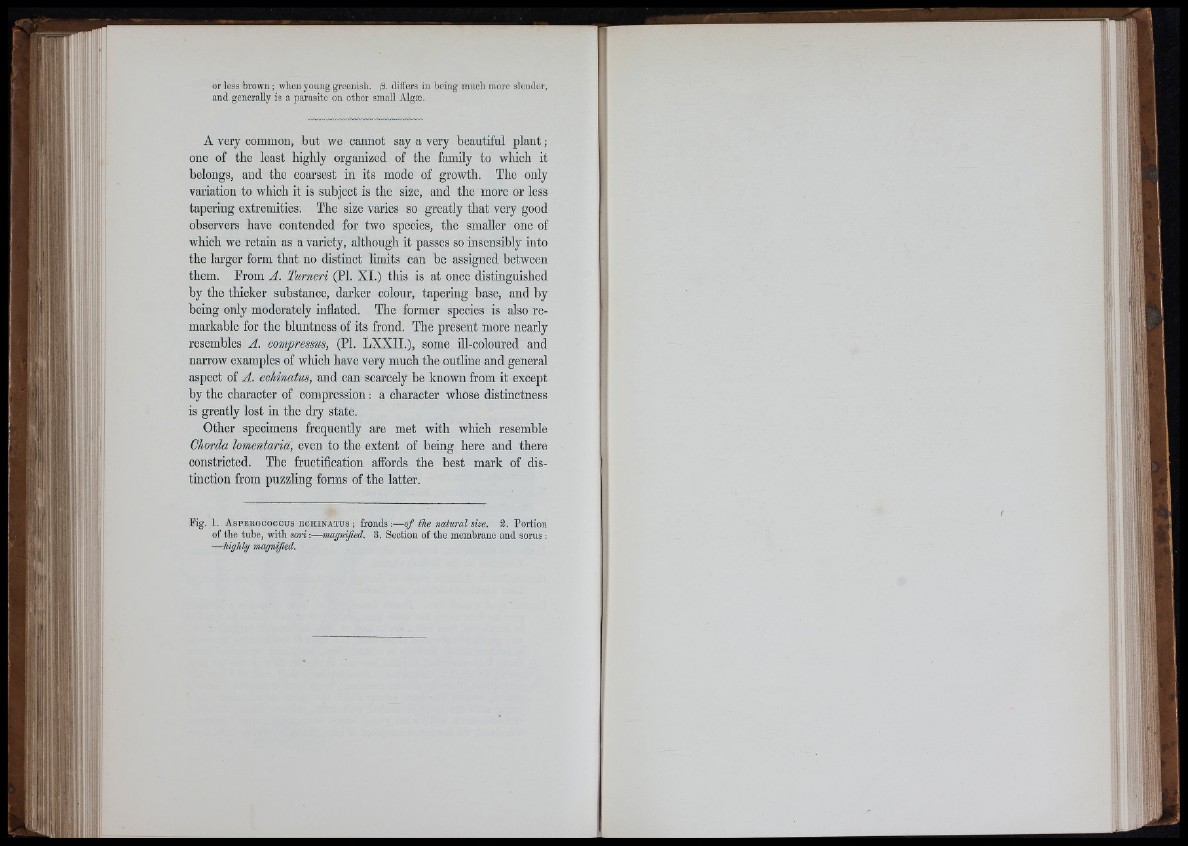
or less brown; when young greenish. /3. differs iu being much more slender,
and generally is a parasite on other small Algm.
A very common, but we cannot say a very beautiful plant;
one of the least highly organized of the family to which it
belongs, and the coarsest in its mode of growth. The only
variation to which it is subject is the size, and the more or less
tapering extremities. The size varies so greatly that very good
observers have contended for two species, the smaller one of
which we retain as a variety, although it passes so insensibly into
the larger form that no distinct limits can be assigned between
them. From A. Turneri (PL XI.) this is at once distinguished
by the thicker substance, darker colour, tapering base, and by
being only moderately inflated. The former species is also remarkable
for the bluntness of its frond. The present more nearly
resembles A. eompressus, (PI. LXXIL), some ill-coloured and
narrow examples of which have very much the outline and general
aspect of A. echinatus, and can scarcely be known from it except
by the character of compression; a character whose distinctness
is greatly lost in the dry state.
Other specimens frequently are met with which resemble
Chorda lomentaria, even to the extent of being here and there
constricted. The fructification affords the best mark of distinction
from puzzling forms of the latter.
Fig. 1. Asperococcus ech in a tu s ; fronds:— o f the natural dze. 2. Portion
of the tube, with s o n ;—magnified. 3. Section of the membrane and sorus :
— highly magnijied.
I
III
•lil
: 'lifo
i,